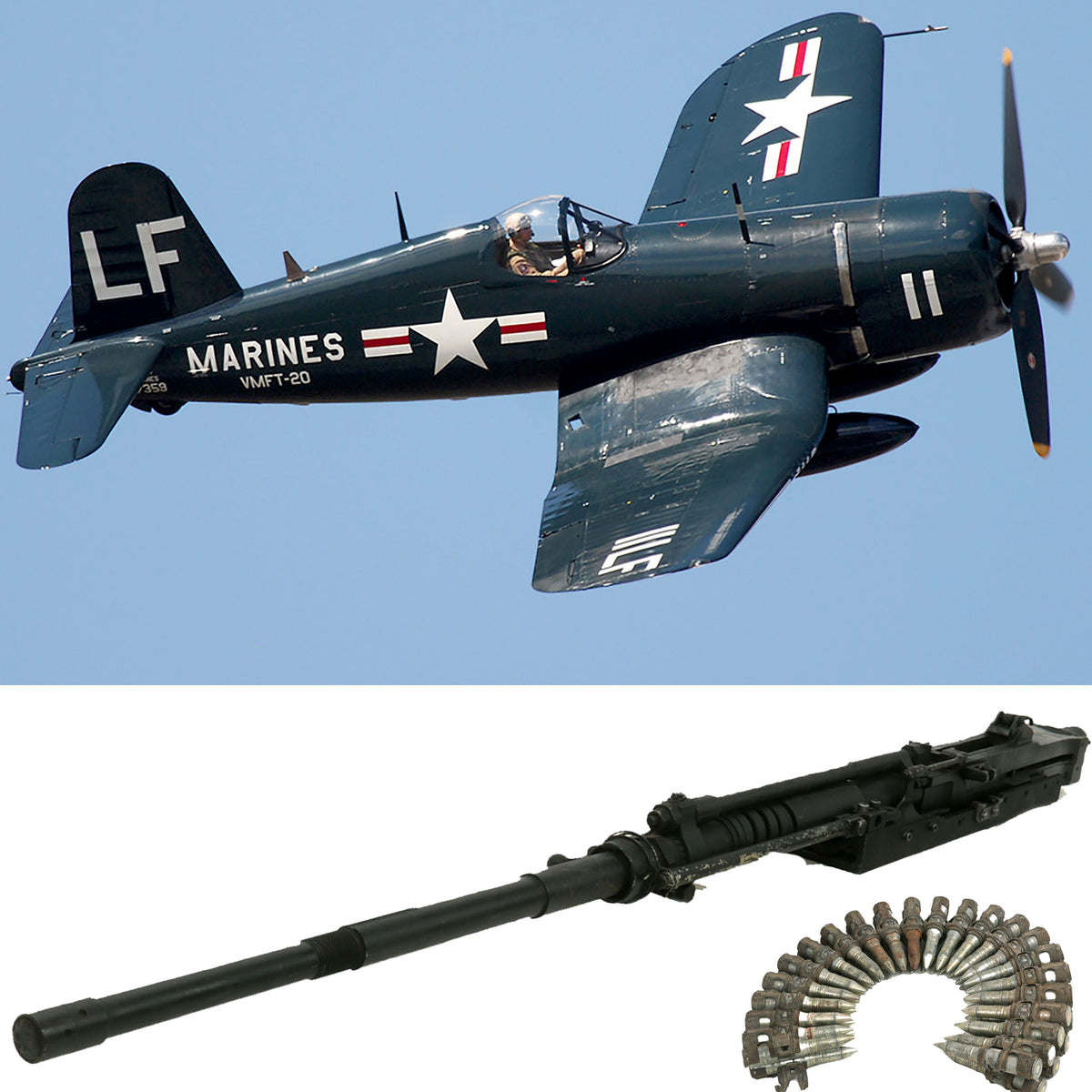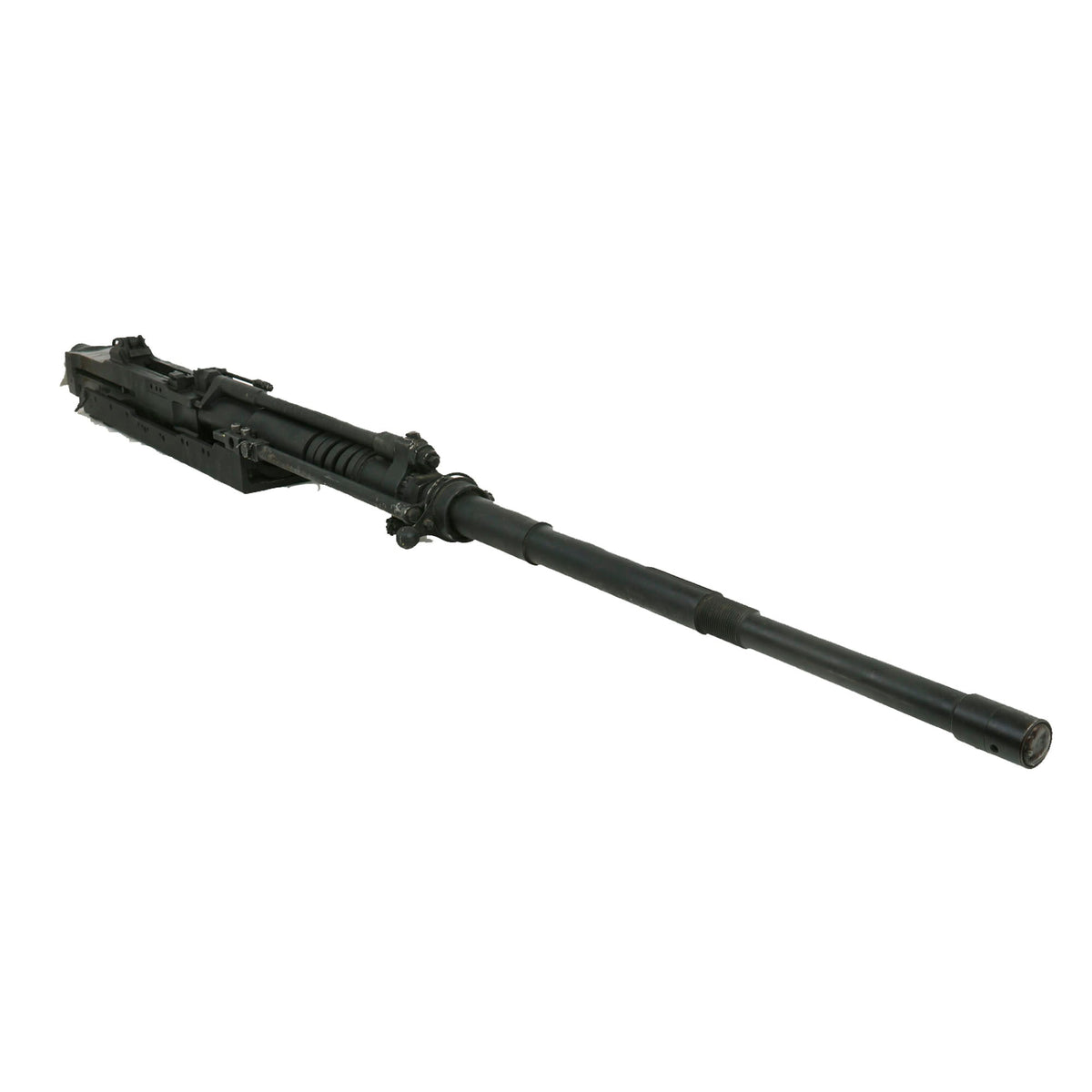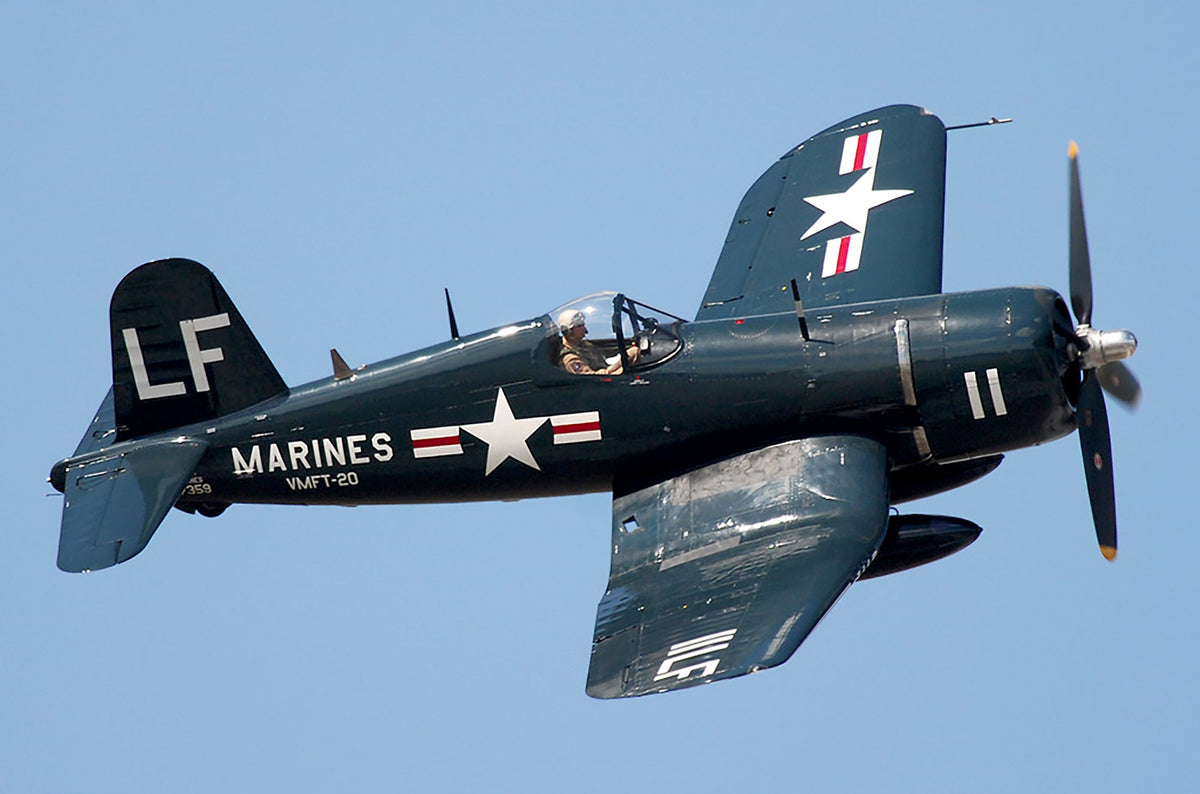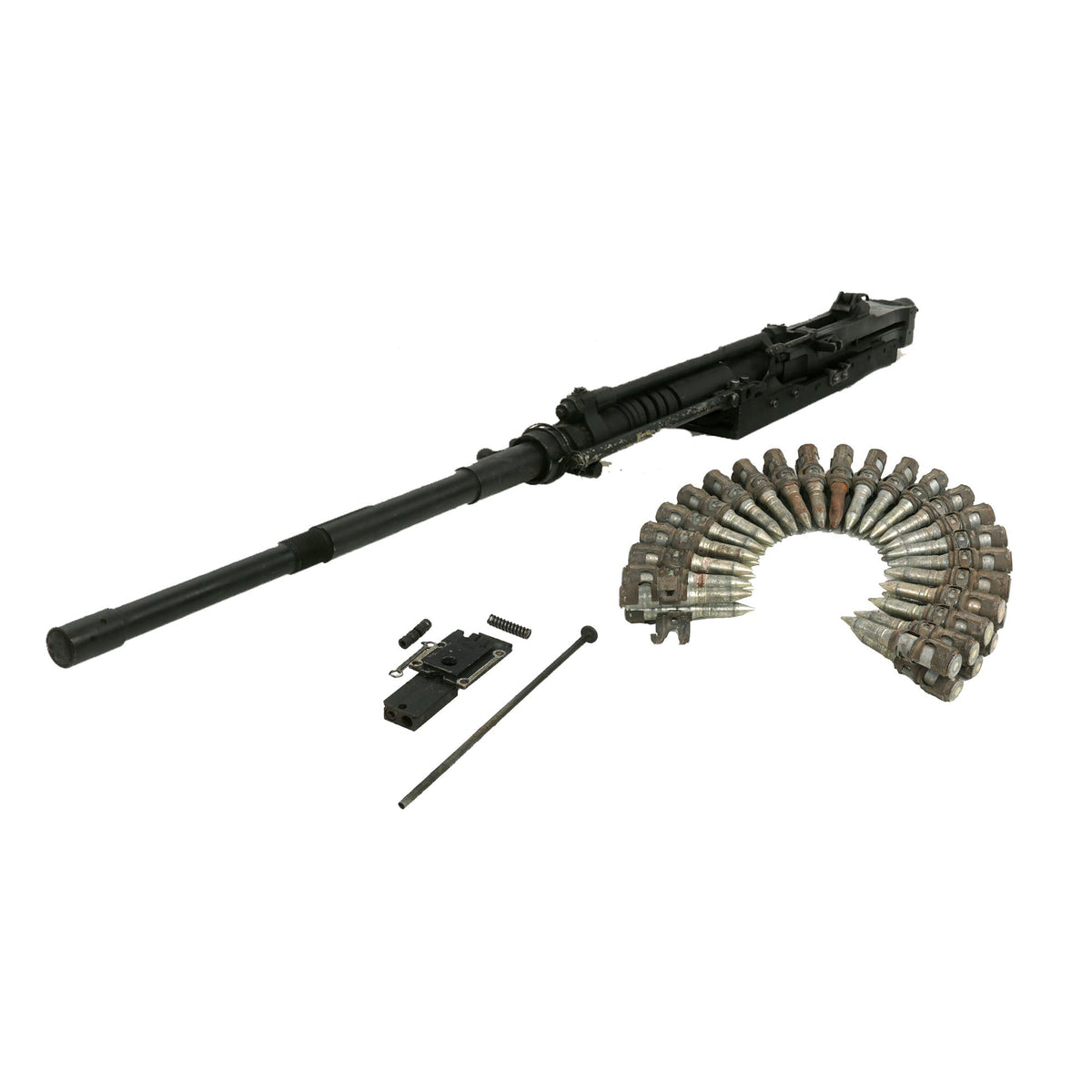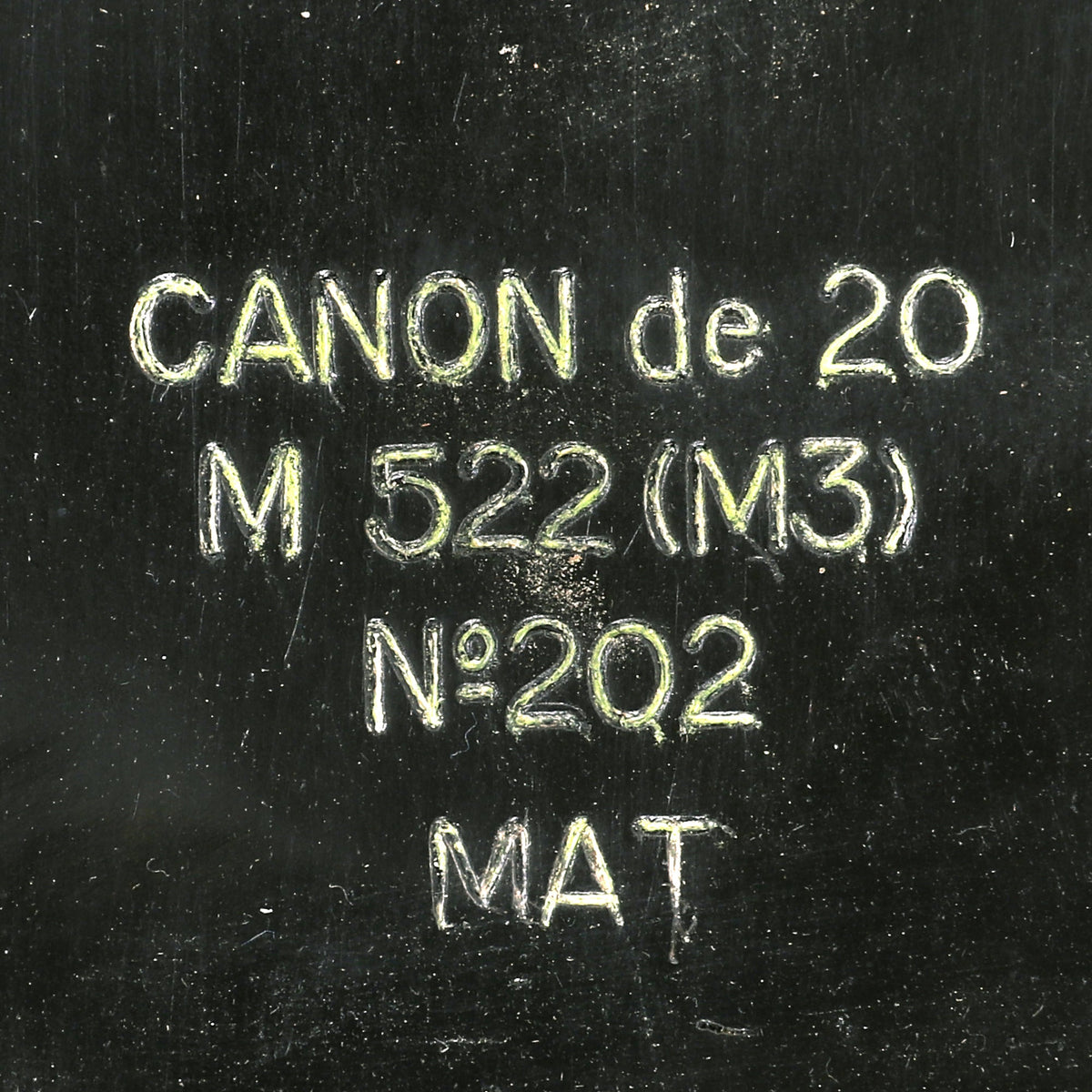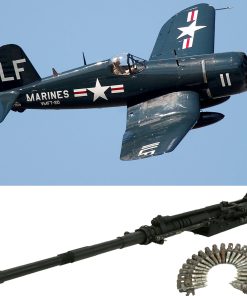Original French 1950s Hispano-Suiza 20mm M522 AN/M3 Display Auto Cannon for Vought F4U Corsair Aircraft by Tulle Arsenal with Dummy Ammo Original Items
$ 3.495,00 $ 873,75
Original Item: Only One Available. This is a fantastic BATF compliant non-firing French Hispano-Suiza 20mm M522 AN/M3 Display Auto Cannon, as used in the Vought F4U Corsair Aircraft. The gun was completely torch cut through the receiver and internals as required, and then re-welded with 2 inches completely severed then removed from the receiver. This makes the overall length of the receiver two inches shorter than original designed. The internal components and the barrel were also deactivated and welded in place, rendering it inert and non-functional. This is a magnificent display inert machine gun, totally legal to own without a license of any kind.
The HS.404 is an autocannon originally designed by and produced by the Swiss arm of the Spanish/Swiss company Hispano-Suiza in the mid-1930s. Production was later moved to the French arm of Hispano-Suiza. It was widely used as an aircraft, naval and land-based weapon by French, British, American and other military services, particularly during World War II. The cannon is also referred to as Birkigt type 404, after its designer Marc Birkigt and later versions based on British development are known as 20 mm Hispano.
Firing a 20 mm calibre projectile, it delivered a significant load of explosive from a relatively light weapon. This made it an ideal anti-aircraft weapon for mounting on light vehicles, as well as a fighter aircraft gun, supplementing or replacing the 7.62 mm (.30 calibre) and .303 inch (7.7 mm) machine guns commonly used in military aircraft of the 1930s. The HS.404 was produced by the French subsidiary of Hispano-Suiza, and under license by a variety of companies in other countries. Due to this there are countless variants of the design, many of which are still in use around the world.
This version of the Hispano-Suiza design a French made version of the U.S. AN/M3 used in the Vought F4U, used to equip the airplanes purchased from the U.S. It was much more cost effective to produce the armaments domestically, as the French definitely had the industrial capacity and skill to do so. It still has the original markings on the rear of the receiver:
CANON de 20
M 522 (M3)
No 202
MAT
This indicates manufacture by Manufacture Nationale d’Armes de Tulle, one of the French National Arms factories, with a history going back to 1690. There is the MAT marking on various other places on the gun, which measures a very long 79 ½ inches in length. The gun is mounted on a carriage, which we believe was normally installed inside the aircraft, allowing the gun to be removed and serviced if needed. We noted that just about all of the nuts and bolts have holes through the heads, with many still having wire wrapped and twisted around. This was done to ensure that vibrations in the aircraft did not cause the bolts to come loose, as that would also possibly introduce a loose bolt that could fly around, damaging additional items.
The machine gun comes with a 40 round belt of dummy ammo, which would normally feed through a chute into the top of the gun, with the belt links and brass coming out the bottom. It also includes some of the internal components that were not used during the construction of the gun.
A wonderful and HUGE display machine gun, ready to add to your collection! It weighs about 80 lbs, so if you want to hang it on the wall, you will need some substandial hardware.
The Vought F4U Corsair is an American fighter aircraft that saw service primarily in World War II and the Korean War. Designed and initially manufactured by Chance Vought, the Corsair was soon in great demand; additional production contracts were given to Goodyear, whose Corsairs were designated FG, and Brewster, designated F3A.
The Corsair was designed and operated as a carrier-based aircraft, and entered service in large numbers with the U.S. Navy in late 1944 and early 1945. It quickly became one of the most capable carrier-based fighter-bombers of World War II. Some Japanese pilots regarded it as the most formidable American fighter of World War II and its naval aviators achieved an 11:1 kill ratio. Early problems with carrier landings and logistics led to it being eclipsed as the dominant carrier-based fighter by the Grumman F6F Hellcat, powered by the same Double Wasp engine first flown on the Corsair’s first prototype in 1940. Instead, the Corsair’s early deployment was to land-based squadrons of the U.S. Marines and U.S. Navy.
The Corsair served almost exclusively as a fighter-bomber throughout the Korean War and during the French colonial wars in Indochina and Algeria. In addition to its use by the U.S. and British, the Corsair was also used by the Royal New Zealand Air Force, French Naval Aviation, and other air forces until the 1960s.
From the first prototype delivery to the U.S. Navy in 1940, to final delivery in 1953 to the French, 12,571 F4U Corsairs were manufactured in 16 separate models. Its 1942–53 production run was the longest of any U.S. piston-engined fighter.
French Aéronavale Use
After the war, the French Navy had an urgent requirement for a powerful carrier-borne close-air support aircraft to operate from the French Navy’s four aircraft carriers that it acquired in the late 1940s (Two former U.S. Navy and two Royal Navy carriers were transferred). Secondhand US Navy Douglas SBD Dauntless dive-bombers of Flotille 3F and 4F were used to attack enemy targets and support ground forces in the First Indochina War. Former US Grumman F6F-5 Hellcats and Curtiss SB2C Helldivers were also used for close air support. A new and more capable aircraft was needed.
First Indochina War
The last production Corsair was the ‘F4U-7, which was built specifically for the French naval air arm, the Aéronavale. The XF4U-7 prototype did its test flight on 2 July 1952 with a total of 94 F4U-7s built for the French Navy’s Aéronavale (79 in 1952, 15 in 1953), with the last of the batch, the final Corsair built, rolled out on 31 January 1953. The F4U-7s were actually purchased by the U.S. Navy and passed on to the Aéronavale through the U.S. Military Assistance Program (MAP). The French Navy used its F4U-7s during the second half of the First Indochina War in the 1950s (12.F, 14.F, 15.F Flotillas), where they were supplemented by at least 25 ex-USMC AU-1s passed on to the French in 1954, after the end of the Korean War.
On 15 January 1953, Flotille 14F, based at Karouba Air Base near Bizerte in Tunisia, became the first Aéronavale unit to receive the F4U-7 Corsair. Flotille 14F pilots arrived at Da Nang, Vietnam on 17 April 1954, but without their aircraft. The next day, the carrier USS Saipan delivered 25 war-weary ground attack ex-USMC AU-1 Corsairs (flown by VMA-212 at the end of the Korean War) to Tourane Air Base. During three months operating over Vietnam (including in support of the Battle of Dien Bien Phu), the Corsairs flew 959 combat sorties totaling 1,335 flight hours. They dropped some 700 tons of bombs and fired more than 300 rockets and 70,000 20 mm rounds. Six aircraft were damaged and two shot down by Viet Minh.
In September 1954, F4U-7 Corsairs were loaded aboard Dixmude and brought back to France in November. The surviving Ex-USMC AU-1s were taken to the Philippines and returned to the U.S. Navy. In 1956, Flotille 15F returned to South Vietnam, equipped with F4U-7 Corsairs.
Suez Crisis
The 14.F and 15.F Flotillas also took part in the Anglo-French-Israeli seizure of the Suez Canal in October 1956, code-named Operation Musketeer. The Corsairs were painted with yellow and black recognition stripes for this operation. They were tasked with destroying Egyptian Navy ships at Alexandria but the presence of U.S. Navy ships prevented the successful completion of the mission. On 3 November 16 F4U-7s attacked airfields in the Delta, with one Corsair shot down by anti-aircraft fire. Two more Corsairs were damaged when landing back on the carriers. The Corsairs engaged in Operation Musketeer dropped a total of 25 tons of bombs, and fired more than 500 rockets and 16,000 20mm rounds.
Fast Shipping with Professional Packaging
Thanks to our longstanding association with UPS FedEx DHL, and other major international carriers, we are able to provide a range of shipping options. Our warehouse staff is expertly trained and will wrap your products according to our exact and precise specifications. Prior to shipping, your goods will be thoroughly examined and securely secured. We ship to thousands clients each day across multiple countries. This shows how we're dedicated to be the largest retailer on the internet. Warehouses and distribution centres can be located throughout Europe as well as the USA.
Note: Orders with more than one item will be assigned a processing date depending on the item.
Before shipping before shipping, we'll conduct a thorough inspection of the items you have ordered. Today, the majority of orders will be delivered within 48 hours. The delivery time will be between 3-7 days.
Returns
The stock is dynamic and we cannot completely manage it because multiple stakeholders are involved, including our factory and warehouse. So the actual stock may alter at any time. It's possible that you may not receive your order once the order has been made.
Our policy is valid for a period of 30 days. If you don't receive the product within 30 days, we are not able to issue a refund or an exchange.
You can only return an item if it is unused and in the same state as the day you received it. You must have the item in its original packaging.
Related products
Uncategorized
Uncategorized
Uncategorized
Uncategorized
Uncategorized
Uncategorized
Uncategorized
Uncategorized
Uncategorized
Uncategorized
Band of Brothers ORIGINAL GERMAN WWII Le. F.H. 18 10.5cm ARTILLERY PIECE Original Items
Uncategorized
Uncategorized
Uncategorized
Uncategorized
Uncategorized
Uncategorized
